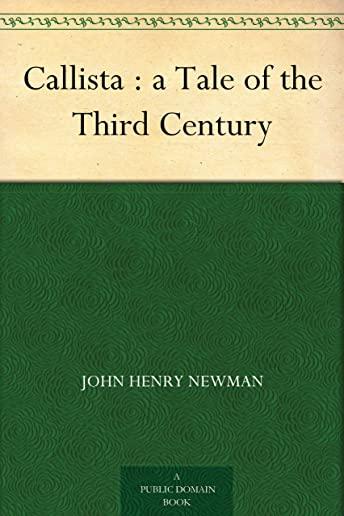
description
9Callista tells a tale of the titular character; a young Greek woman who witnesses the Christian persecutions in Egypt during the 3rd century CE.
A romantic tale, we join Callista - an astoundingly beautiful 17-year-old Greek orphan - as she journeys to North Africa. She proves a talented crafter of stone; her artisan skills are in great demand particularly from pagan cultists seeking idols. At the time the lands are under the dominion of the Roman Empire, whose oppression young Callista witnesses first-hand. Hearing of Christianity, and feeling struck by the profound appearance of the symbolism of the faith, Callista is further drawn to the faith by a young Christian suitor named Agellius.
Rumors of Callista's Christianity see her imprisoned, whereupon Saint Cyprian arrives with a copy of the Gospel of Luke. It is here that Callista's journey towards faith truly begins, as she comprehends the virtues extolled by the early scriptures and the Lord Jesus Christ. Although in dire circumstances, Callista's spirit is lifted by the holy sentiments: she is able to weather her harsh fate and successfully convert to the faith.
Although a good novel in its own right, Callista may also be read as an extension of the theological interests of the author, Cardinal John Henry Newman. Particularly intrigued by conversion and how it may take place or affect a person, Newman's extensive researches into early Christianity are put to good use in this historical fiction. Cardinal Newman's works concerning or alluding to Christian history span many lengthy essays, books of poetry, and his autobiography - as such, Callista may be considered an introduction.
This novel is also valuable for its historical accuracy; over his years researching the development of Christianity, Newman determined the progress and landmark events of the Roman persecutions. To this day his work on the once-obscure history is cited by scholars for its thoroughness and accuracy.
A romantic tale, we join Callista - an astoundingly beautiful 17-year-old Greek orphan - as she journeys to North Africa. She proves a talented crafter of stone; her artisan skills are in great demand particularly from pagan cultists seeking idols. At the time the lands are under the dominion of the Roman Empire, whose oppression young Callista witnesses first-hand. Hearing of Christianity, and feeling struck by the profound appearance of the symbolism of the faith, Callista is further drawn to the faith by a young Christian suitor named Agellius.
Rumors of Callista's Christianity see her imprisoned, whereupon Saint Cyprian arrives with a copy of the Gospel of Luke. It is here that Callista's journey towards faith truly begins, as she comprehends the virtues extolled by the early scriptures and the Lord Jesus Christ. Although in dire circumstances, Callista's spirit is lifted by the holy sentiments: she is able to weather her harsh fate and successfully convert to the faith.
Although a good novel in its own right, Callista may also be read as an extension of the theological interests of the author, Cardinal John Henry Newman. Particularly intrigued by conversion and how it may take place or affect a person, Newman's extensive researches into early Christianity are put to good use in this historical fiction. Cardinal Newman's works concerning or alluding to Christian history span many lengthy essays, books of poetry, and his autobiography - as such, Callista may be considered an introduction.
This novel is also valuable for its historical accuracy; over his years researching the development of Christianity, Newman determined the progress and landmark events of the Roman persecutions. To this day his work on the once-obscure history is cited by scholars for its thoroughness and accuracy.
member goods
No member items were found under this heading.
Return Policy
All sales are final
Shipping
No special shipping considerations available.
Shipping fees determined at checkout.







